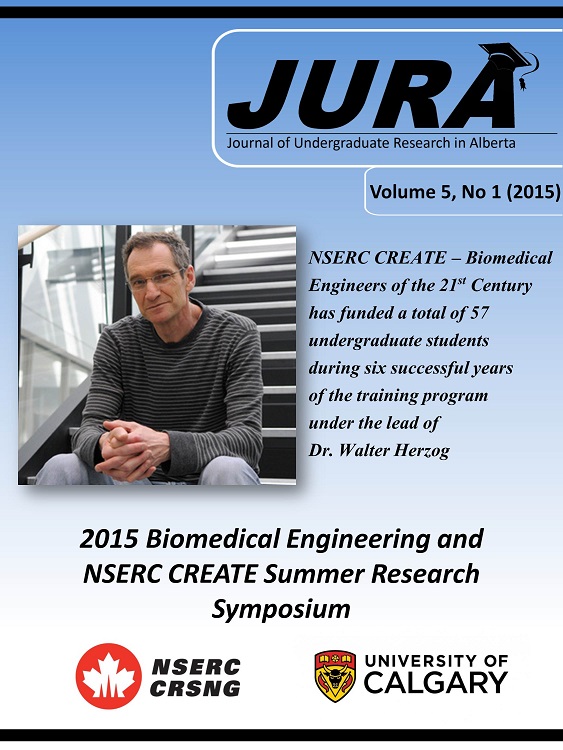ESTIMATING DIELECTRIC PROPERTIES OF BIOLOGICAL TISSUE
Keywords:
microwave imaging, dielectric properties, ultra-wideband (UWB), antenna, calibration, medical imaging, permittivity, conductivityAbstract
INTRODUCTION
Microwave imaging has been of interest in recent decades, offering the potential of an affordable and non-ionizing medical diagnostic modality. This technique is sensitive to changes in dielectric properties such as permittivity and conductivity. One approach is microwave radar imaging, which creates images by focusing signals caused by reflections at material interfaces. In order to improve the images from radar approaches, patient-specific dielectric property estimations have been used to determine the speed of wave travel within the tissue [1]. Estimating dielectric properties of biological tissue can also be useful in emerging quantitative applications including bone health assessment. Methods such as local rod probes and antenna measurements of planar samples have been developed to estimate dielectric properties, but are of limited use for in vivo measurements. We have previously developed methods of permittivity estimation with a custom antenna, however this approach requires two measurements at different separation distances and is unable to estimate conductivity. This study aims to improve on methods of estimating permittivity and to add an estimate of conductivity of in vivo biological tissue by incorporating an antenna calibration method.
METHODS
In order to remove the influence of the antennas on measurements, a previously developed calibration method [2] was adapted to be used with a custom ultra-wideband antenna system [3], allowing permittivity and conductivity to be estimated over a range of frequencies. The two antennas are characterized as 2x2 matrices at each frequency, determined from two calibration measurements: the first is performed with the antennas separated by an electrical conductor, and the second measurement is done with the antennas in direct contact with one another. Measurements were performed using a vector network analyzer (Agilent, PNA-L, N5230A), and take less than 15 seconds. Measurement samples were placed between the two antennas, with their surfaces in contact with the entire antenna aperture. Dielectric properties were then estimated using the magnitude and phase of the calibrated transmission data. To validate this method, dielectric properties of several liquids were estimated and compared to literature values.
RESULTS
A general agreement was seen between the estimated and literature dielectric properties of several liquids, particularly for high permittivity materials. The estimated and literature permittivity of distilled water is shown in Figure 1. Several biological tissues were then measured such as human calf and heel, and porcine bone excisions. Literature values for these properties are limited as they are often done using local probes which only measure the properties at the surface of a sample.
DISCUSSION AND CONCLUSIONSA calibration method has been adapted to enable an ultra-wideband antenna system to assess dielectric properties of in vivo tissue at microwave frequencies. The estimated properties of the tested liquids align closely to literature, providing confidence in estimates of biological tissues which have limited literature values. This technique can be used towards microwave radar signal speed estimates, and for quantitative property measurements. Future improvements could include a skin subtraction method to isolate the properties of bone or other tissue under the skin, and development towards microwave bone health assessment.
Downloads
References
Bartley, PG and Begley, SB. IMTC. 372-375, 2005.
Bourqui, J and Fear, EC. IEEE AWPL. 11:1614-1617, 2015.
Downloads
Published
Issue
Section
License
Authors retain all rights to their research work. Articles may be submitted to and accepted in other journals subsequent to publishing in JURA. Our only condition is that articles cannot be used in another undergraduate journal. Authors must be aware, however, that professional journals may refuse articles submitted or accepted elsewhere—JURA included.


